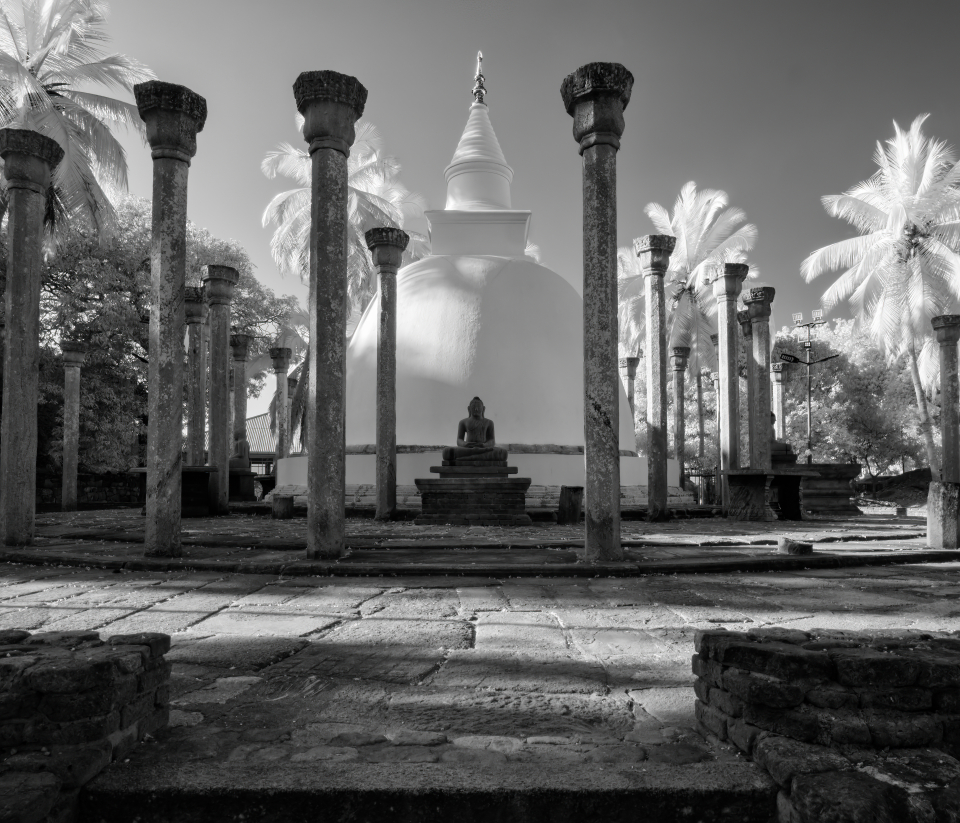Much-respected, multi-awarding winning photographer Nevada Weir has been exploring infrared photography since the film days. Like me, when she converted to digital photography in the early 2000’s she also re-discovered infrared photography via the digital medium. Since those early days she teaches, speaks at seminars, and leads rarefied tours around the world. She has also developed a unique and special – to my eyes anyway – approach to infrared travel photography. Look at her images and see for yourself.
I won’t go deeply into the technical aspects of infrared photography here (if interested, check out this detailed Wikipedia page or this short article), but there are two basic approaches to it: creating faux color images or converting the images to black-and-white. Color infrared photography requires that in addition to permitting infrared wavelengths to touch the camera’s sensor, you also allow certain amounts of visible light. B/W infrared photography instead necessities the removal of any color – if any is there. You may hear talk amongst IR photographers of what “cut-off” their cameras are. What they are referring to is what bandwidth range their given filter or camera conversion is. Alpine resident Clarence Spencer (who has converted all my IR cameras) has a good page detailing the IR filter options. The take-away is that for color IR your camera should capture in the 590nm+ wavelength whilst for B/W IR photography it is preferred to shoot 720nm+.
In text messaging conversations I’ve had with her – as well as on her website – Nevada has been clear that she does not do black-and-white IR photography. Instead, she has developed a color infrared style that not only suits her subject matter and compositions but is very creative and is easily identifiable as being hers. Most of the color infrared photography images I have seen are strongly false-color centric (some might say tending to garish at times) with cyan or emerald skies and magenta foliage dominating. My own dabbling with my 665nm converted camera was fun but ultimately not something that I seriously pursued. Nevada uses 590nm converted cameras, but her processing is very subtle and creates dreamy images that successfully blend pastel colors with a slightly monotone back palette. She talks a bit about her approach here and has taught her techniques as well. If it is not clear yet, I greatly admire her creative vision and what she is able to do with it.
Other than the “dabbling” I mentioned above, my approach to infrared travel photography is perhaps more basic and certainly less medium-and-genre bendingly creative as Nevada’s. I primarily use IR to explore and display black-and-white images with strong light, deep shadows, lines and patterns in landscapes, cities, villages, ruins, and temples. Unlike with Nevada’s images, people, if present, are not the main subject. With color infrared photography Nevada is exploring what she calls “The Invisible World.” My IR explorations over the last twenty years have yielded several projects variously labeled “In a Different Light.” This is what is so interesting and ultimately rewarding about photography: we are all using basically the same or at least very similar tools and yet the ability to explore, discover, and share different worlds is there for all of us.


